16 Health Benefits of Sarvangasana (Shoulder Stand Pose) & Steps to Perform
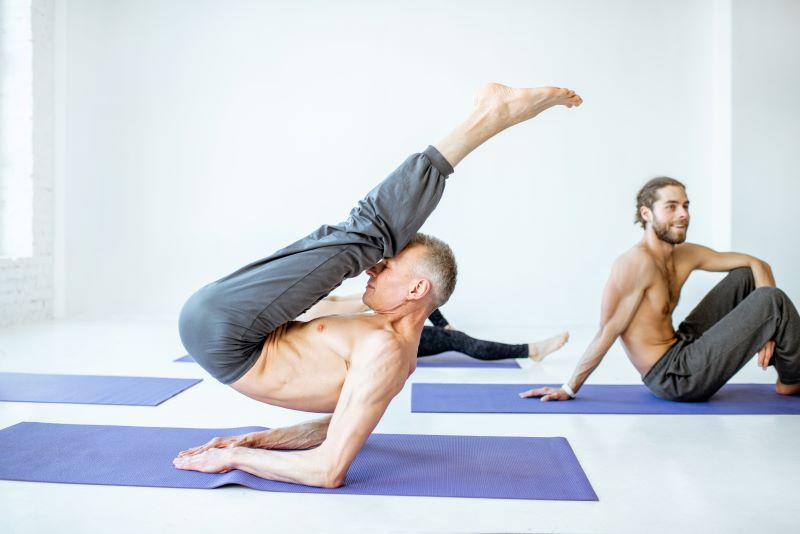
The shoulder stand, also called Sarvangasana, is a highly regarded asana in yoga for its mental and physical advantages. This pose of the reversed body involves balancing on the shoulders with extended legs toward the sky.
It has been practised for centuries and is believed to stimulate different body systems, such as the parathyroid glands and thyroid, improve blood flow, and induce relaxation. Read this piece carefully to learn more about the health benefits of Sarvangasana, its definition, process, and others.

Table of Contents

What Is a Sarvangasana?
The name Sarvangasana is derived from the words 'Sarv,' which means everything, 'Anga', which means the physical part, and 'Asana,' which means position. It is a full-body exercise that engages many muscles.
People also call it the 'queen of all asanas' as it benefits both inside and outside the body. This exercise aims to achieve accurate posture, balance, and calmness.
How Often Should You Practise Sarvangasana?
The regularity with which Sarvangasana is done depends upon your level of expertise. For beginners, 2-3 sessions a week are enough, with each session lasting for about half a minute to about sixty seconds. One can gradually increase to about 5 minutes within 2 or 3 sessions weekly.
In between, intermediate practitioners will desire to stay in this posture for 2 to 3 minutes, 4 to 6 times weekly. Advanced yogis may work daily, waiting 5 minutes after every training session. Ensure your poses are correctly positioned, and listen to your body's words to prevent injury.
Top 16 Health Benefits of Sarvangasana
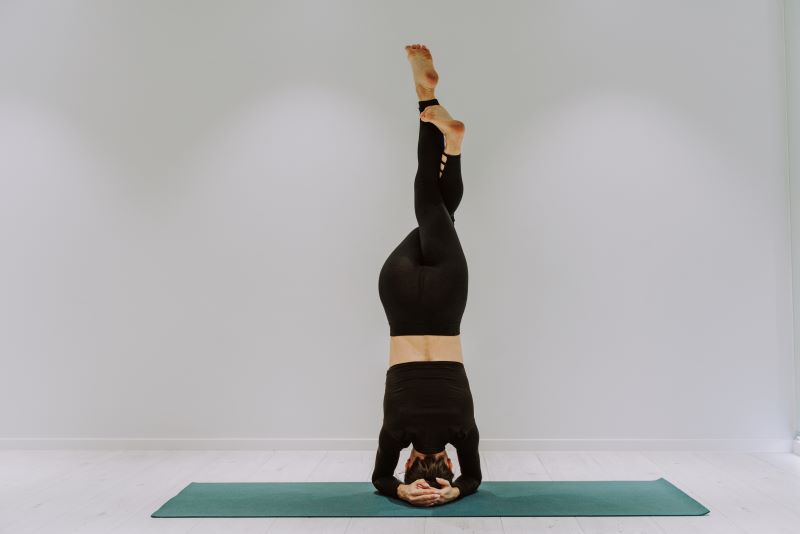
Under the following points have discussed the Sarvangasana's mental and physical advantages. Refer to it to get a deep insight:
Physical Benefits Of Doing Sarvangasana
1. Controls Respiratory Problems
If you have respiratory issues, a shoulder stand can benefit you. It helps drain all toxins out of your respiratory system, allowing oxygen to reach every part of your body. This further controls the symptoms of sinusitis, asthma, and other related issues.
2. Increases Lung Capacity
When you perform Sarvangasana, you can better supply blood to your lungs. This further strengthens the lower portion of the organ and makes it efficient. As a result, the capacity of your lungs increases.
3. Enhances Flexibility and Strength
Another advantage of Sarvangasana is it enhances your body's flexibility and strength. In other words, you maintain a strong shoulder, arms, and back.
4. Aids in Weight Loss
One of the most significant benefits of Sarvangasana is that you can control your body weight i.e. by adopting it in your daily life. It induces weight loss by toning your abdominal muscles, losing the extra flap in your stomach, and giving you core strength.
5. Improves Gut Health
You can also improve your gut health through this exercise. This is because it induces a better blood circulation and drains all stagnant blood. Additionally, you get rid of indigestion, constipation, and other digestive problems.
6. Improves Reproductive Health
A shoulder stand also helps improve your reproductive health by balancing your mood and relieving symptoms of menopause. As a result, the reproductive system becomes more efficient, and you control conditions like frequent abortion and syphilis.
7. Controls Blood Sugar Level
Sarvangasana is also beneficial for diabetic patients as it helps regulate blood sugar levels. It does so by regulating the production of insulin in your body.
Mental Benefits of Doing Sarvangasana
8. Establishes Better Mental Health
If you suffer from inadequate sleep, you can benefit from this yoga. It releases happy hormones like dopamine in your brain. This reduces the amount of anxiety, stress, and depression, thus promoting a good night's sleep. Furthermore, you can also cure mood and sleeping disorders like insomnia.
9. Focus Enhancement
It increases attention and clear thinking, which is advantageous in daily activities. The pose increases blood flow to the brain, thus improving cognitive functioning and focusing on specific work tasks.
10. Mind Calming
This pose helps to develop calmness and peace of mind. In this position, it is possible to shut off distracting thoughts from the mind, attaining a more reflective internal state.
Other Benefits
11. Balances Hormone
By performing shoulder stands regularly, you can improve your hormone balance. This happens because your body can drain stagnant blood from your lower body, allowing more blood to reach your hormonal glands and brain.
This further improves the function of your endocrine system and stimulates your thyroid gland. Thus, you avoid the issue of low or high thyroid hormone production.
12. Boosts Immunity
Sarvangasana also has immunity-related benefits. The exercise helps balance different systems of your body, including circulatory, nervous, reproductive, and digestive. So, overall, it has a positive impact on your health.
13. Avoids Functional Disorder
Adopting Sarvangasana in your daily life can prevent attracting functional disorders relating to your nose, eyes, ears, and throat. Not only this, but it also improves its functioning by supplying blood to the areas properly.
14. Benefits Hair
Sarvangasana boosts blood circulation in your scalp. As a result, you avoid hair fall, benefit from hair growth, and provide proper nourishment to your hair follicles.
15. Maintains a Better Skin
Sarvangasana is one of the best yoga you can adopt to improve your skin's condition. It does so by improving blood circulation to your face. So, you get clearer skin with no wrinkles, pimples, dullness, acne, etc.
16. Prevent Eye Problems
Last but not least, a shoulder stand helps prevent eye problems. The eyes are the most sensitive part of our body, and yoga helps maintain their condition by improving eyesight, promoting blood flow around them, etc. Also, it eliminates any functional disorder with your eyes, reduces eye tension, and eases engaged muscles.
Types of Sarvangasana
Sarvangasana, a shoulder stand in another form, is a versatile and advantageous yoga posture with some variations for different levels of practitioners. Each variation has its benefits and challenges, enabling beginners to use it while allowing the experts to further their practice. The following are the types of Sarvangasana and how they are carried out.
1. Salamba Sarvangasana (Supported Shoulder Stand)
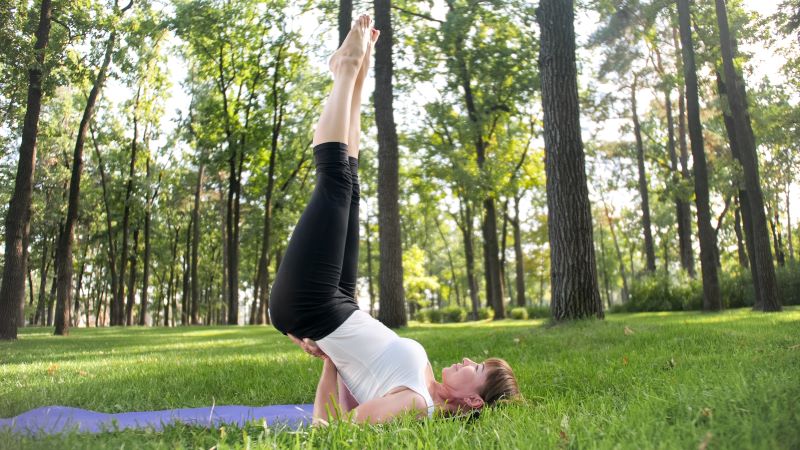
Lie down on your back, arms by the side, feet together, and knees straight. Deeply inhale, then exhale as you raise your legs to 90 degrees. Place your hands under your buttocks to support the lower back region. Press into the palms of your hands and raise the pelvis region towards the ceiling while aligning it with the leg and trunk.
Bring elbows forward so they are close together. Lift up your legs with a vertical trunk and keep your chin tucked in. Breathe deeply for about half a minute to a minute, then slowly release thus engaging with gravity through lowering of one’s hips and legs to Savasana pose.
2. Niralamba Sarvangasana (Unsupported Shoulder Stand)
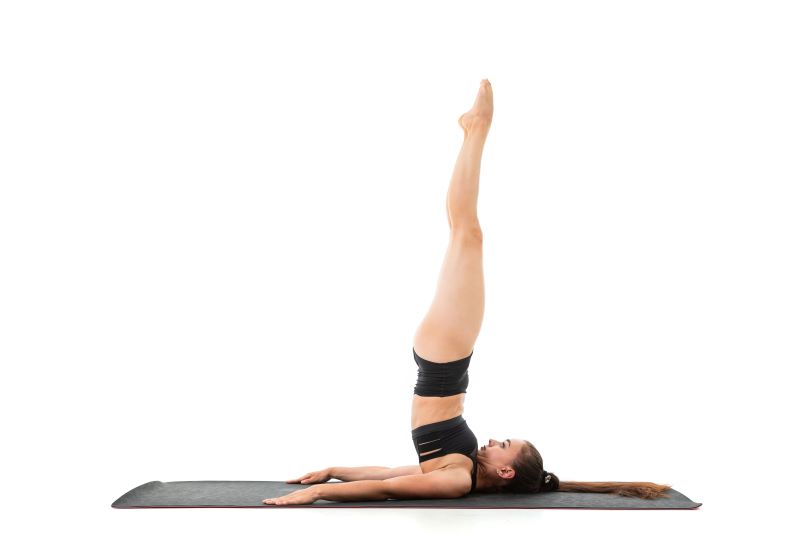
Start in Salamba Sarvangasana. Release hands away from the lower back and extend them along the body's sides, keeping palms facing down. Ensure that all muscles that help maintain body balance remain well coordinated, thus providing perfect vertebral alignment, using the sternum position as a reference point.
Perform this posture briefly before returning your hands to their former positions against the lumbar regions for another descent.
3. Eka Pada Sarvangasana (One-Legged Shoulder Stand)

Start with Salamba Sarvangasana first. Lower one leg behind the head towards the floor while keeping the other leg vertical up in the air. Keep the core engaged always for stability purposes, and use hand assistance when necessary. Hold for a few breaths there, then switch sides by changing legs.
4. Parsva Sarvangasana (Side Shoulder Stand)
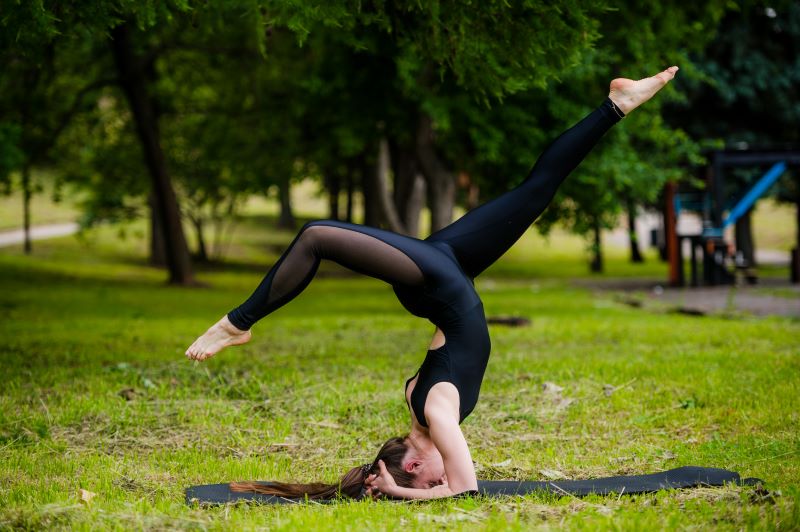
Get into Salamba Sarvangasana. Drop both legs to one side, but keep them straight and close together. Stay there for a few breaths, then move back to the centre before you start again on the other side.
5. Setu Bandha Sarvangasana (Bridge Shoulder Stand)
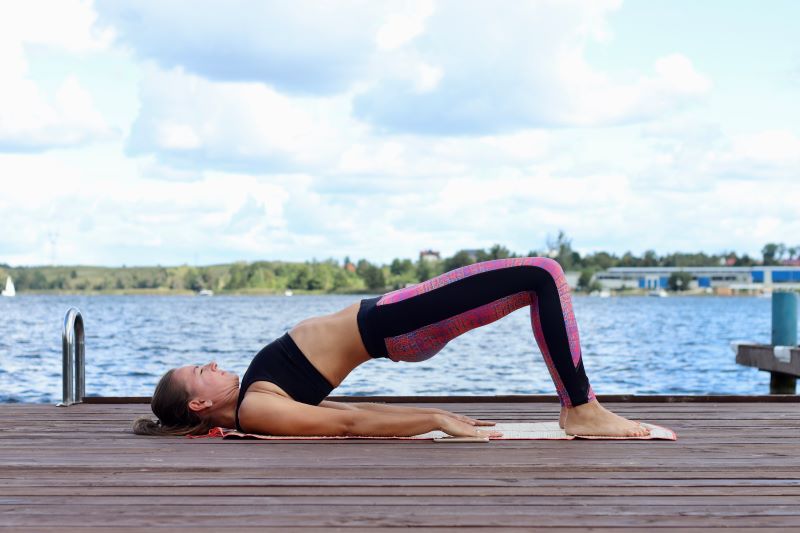
Lie down on your back with your knees bent and feet flat on the floor. Raise your hips into a bridge while keeping your hands supporting your lower back and lifting your torso and legs. Hold it for a couple of breaths, then bring your hips down, followed by relaxation.
6. Viparita Karani (Legs-Up-The-Wall Pose)
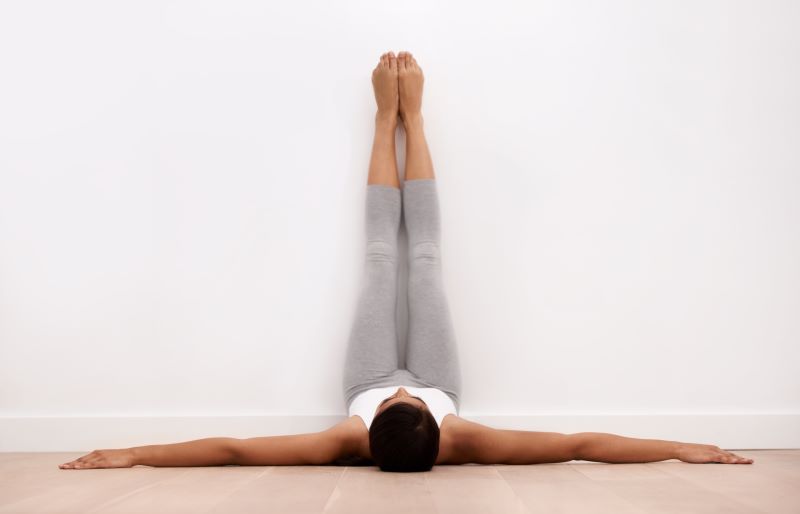
Sit in front of a wall sideways, lie on your back, and swing your legs against it. Keep arms next to the body or across the abdomen. Breathe deeply while relaxing for several minutes.
7. Baddha Konasana Sarvangasana (Bound Angle Shoulder Stand)
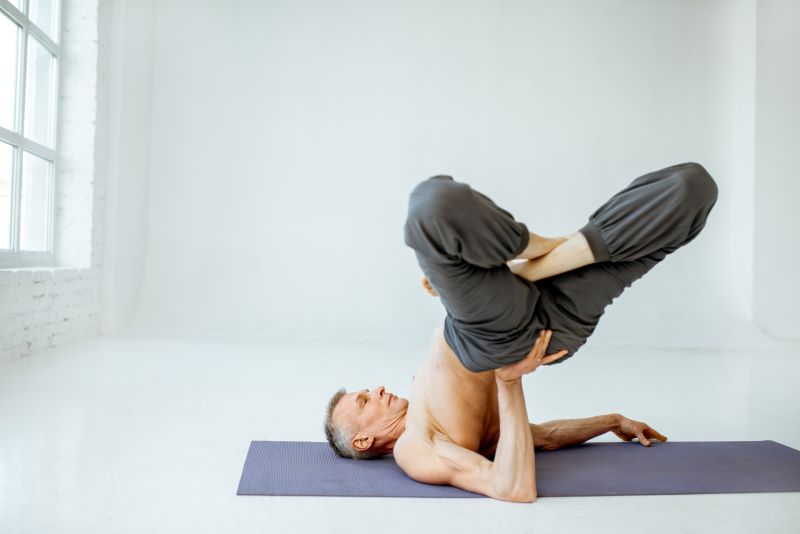
Start in Salamba Sarvangasana position. Push the soles of your feet together, allowing your knees to drop outwards, creating a diamond shape between your thighs. Keep it going for three breaths before returning your legs up and bringing them down vertically.
What are the Steps to Perform a Sarvangasana?
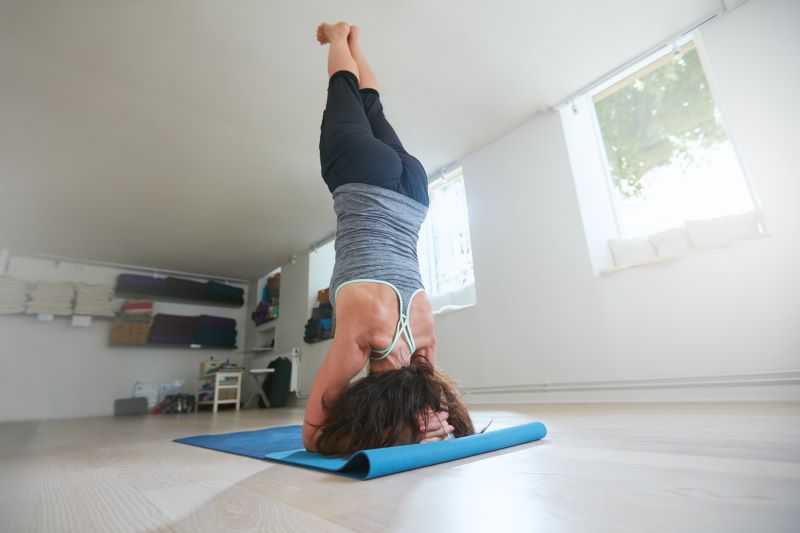
Proper technique is crucial to avoid injury and maximise the pose's advantages. Here are the steps to perform Sarvangasana correctly.
Step 1: Lie on a yoga mat with your legs kept together and arms positioned by your sides with the palms down.
Step 2: Inhale deeply, contract abdominal muscles, and exhale slowly to raise your legs straight into 90-degree angles.
Step 3: Use hands to support the lower back, palms resting on the lumbar region.
Step 4: Pushing palms toward the lower back, lift the hips from the floor until they align with the legs and trunk.
Step 5: Move elbows toward each other to give more support as you lift your body off the floor vertically.
Step 6: Make sure your chin touches your chest to firm up for stability.
Step 7: Focus on keeping your body straight and balanced.
Step 8: Breathe profoundly but steadily as you maintain a relaxed neck posture.
Step 9: Hold this pose for 30 seconds to about one minute, gradually progressing to longer durations.
Step 10: To come out of this pose, slowly bring both legs down at right angles to the floor, then lower them until both legs are flat on the ground again.
Step 11: Take arms away from the lumbar and put them back by the sides.
Step 12: After recovering through Savasana, practise Matsyasana, among others, which are counter-poses.
When done correctly, practising will result in benefits without risking harm to oneself.
Things Required to Practise Sarvangasana
Some preparations before practising Sarvangasana include a few necessary items to be undertaken for safety and comfort during this exercise. These are the things you need:
- Yoga Mat: A good quality mat offers cushioning, prevents slipping and provides a stable surface for practice.
- Blankets or Yoga Bolsters: Folded blankets or yoga bolsters may help support the neck and shoulders while maintaining proper alignment to avoid strain. Typically, two to three firm blankets are used.
- Wall Support: If you are new, practising near the wall to boost your stability is good. The wall can assist in maintaining balance as well as alignment.
- Yoga Strap: When doing some of the most complex variations of shoulder stands, one can secure the arms properly with a strap. This technique works exceptionally well in advanced poses and assists with correct alignment.
- Comfortable Clothing: Wear comfortable clothes that allow your body to breathe so you can move freely in all postures. Avoid baggy clothes that might interfere with poses or limit freedom of motion.
- Clear Space: Make sure there is enough free space around your exercise area so that you do not hit any objects or furniture while performing this posture.
6 Tips for Practising Sarvangasana
Sarvangasana is high-intensity yoga and thus should not be performed after rigorous gymnastics practice. This is because it can do more harm than benefit you with all the abnormal rush of blood in your brain. Other preventive tips you must keep in mind are:
Your knees should be straight, and your toes should point to the sky. However, don't tense. This helps prevent blood from draining from the legs.
Keep your head straight and stare at your toes while performing this yoga.
Don't raise your head off the ground.
The body should be in a straight line from the tips of your toes up to your chest.
Your trunk should be high enough that your chin can rest against your chest comfortably.
Don't move your neck in the chin lock position, or you may overstrain it.
Precautions and Contradictions of the Sarvangasana
If you perform Sarvangasana, certain conditions can drastically harm your body. So, you should avoid it as a precaution. These contraindications include:
Spondylolysis
Slip disc
Enlarged thyroid
Chronic thyroid issue
Enlarged spleen or liver
Heart problems
Menstruation
Pregnancy
High myopia
Glaucoma
Weak eye blood vessel
Brain diseases
Neck, back, or shoulder injury
Side Effects of Performing Sarvangasana
Sarvangasana provides various benefits, though it is essential to be aware of potentially dangerous consequences and contraindications when practising safely. Here are some side effects to consider.
- Balance Issues: Beginners may face problems that can lead to falls or injuries if not done carefully.
- Headache: This pose may cause headaches because the blood flow into the head might increase, especially for those who get migraines.
- Ear Problems: Individuals suffering from ear infections or vertigo may find inversion worsens these issues.
- Hernia: People with an earlier history of hernias should not attempt this as it puts pressure on the condition.
- Neck Strain: A wrong position can stress the neck, leading to strain or injury.
- Spinal Problems: Doing this without the proper support can worsen spinal issues and cause new ones, especially in the cervical spine.
- High Blood Pressure: This turning upside-down might lead to high blood pressure that may be harmful for people with hypertension or cardiovascular diseases.
- Dizziness or Vertigo: The inversion pose can make someone dizzy or even have vertigo mainly when he/she does not move gradually into it.
- Eye Tension: This posture can increase eye pressure level, making conditions like glaucoma more difficult.
- Breathing Difficulties: Any wrong placement can press against your chest and diaphragm, thus causing respiratory problems.
- Thyroid Complications: It stimulates the thyroid gland. However, it may worsen symptoms of hyperthyroidism, resulting in other health disorders.
- Digestive Discomforts: It is important to note that performing this asana too soon after eating might cause digestive distress or even aggravate acid reflux disease.
- Menstrual Cycle Considerations: Inversions are generally discouraged during menstruation because they may interfere with the normal flow and result in discomfort.
- Nerve Impingement: Poor form might compress nerves in the neck and shoulder regions, causing pain or tingling.
What are the Easy Modifications of Sarvangasana?
Below are some modifications in which you can make performing shoulder stand a little easier:
- Place Blanket Underneath Your Neck or Shoulder: Placing a blanket under your shoulder and neck provides the necessary support to complete this pose.
- Take Wall Support: Another variation you can bring starting is lifting your legs against a wall while raising your back from the ground.
- Incline or Bend Legs: Some people find raising their legs at a 90-degree angle challenging. So, they can start with inclined or folded legs and then progress.
- Take Chair Support: You can also use a chair to support you by placing it close to your lower back and hips while raising it.
- Do Half Sarvangasana: You can also start with half Sarvangasana. In other words, place one leg on the wall and raise the other at a 90-degree angle. Alternate legs to practise better.
- Ask for a Companion's Help: You can access a companion's help. It can be anyone, your teacher or your partner, to help you hold your legs up in the air at a 90-degree angle. This variation gives you the confidence to remain in the position for longer.
Who Should Avoid Performing Sarvangasana?
Some people should not practise Sarvangasana because of the risks and contraindications of this pose.
- People with Neck or Spine Injuries: Those having cervical spine pathologies, herniated discs, or any other grave neck or spinal afflictions should not perform this asana.
- Individuals with Hypertension: The headstand poses a risk for hypertensives due to increased blood pressure in an inversion that can negatively affect cardiovascular well-being.
- Patients with Glaucoma or Eye Problems: This asana raises intraocular pressure, so it is not recommended for patients with glaucoma and other eye diseases.
- Those with Heart Conditions: Heart ailments, including cardiovascular issues, are aggravated by performing Sarvangasana.
- Individuals suffering from Thyroid Disorders: Although this pose stimulates the thyroid gland, it must be avoided unless prescribed by a doctor in cases of hyperthyroidism.
- Women during Menstruation: Practically, one should refrain from inversions during menstruation since they hamper natural flow, causing various discomforts.
Sarvangasana, or shoulder stand, is an inversion pose that supplies blood to your brain better and provides other benefits. To learn about the health benefits of Sarvangasana, read the above article carefully. This yoga pose can cure chronic conditions like insomnia, constipation, and depression. Moreover, it keeps your body healthy by aiding different organ systems.













